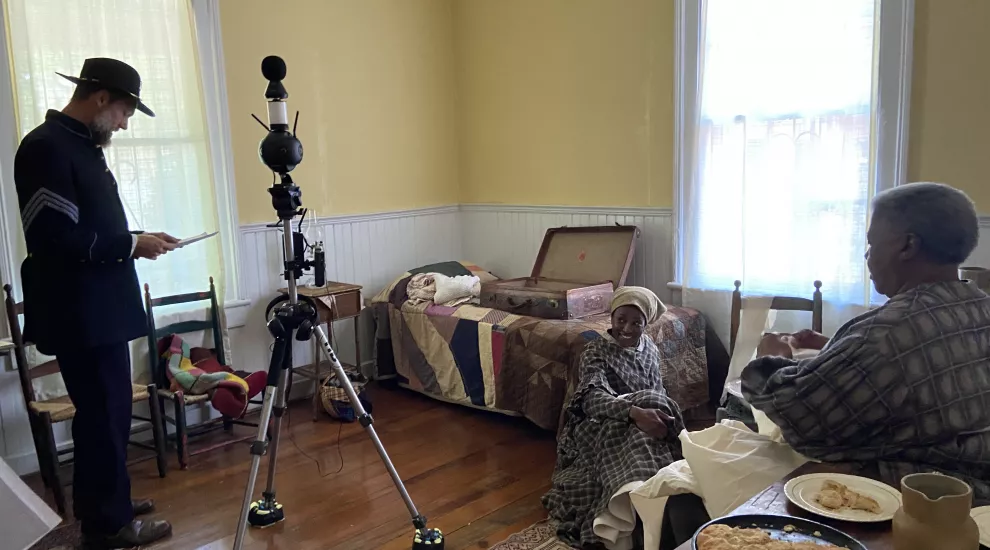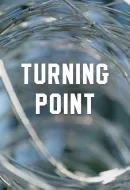
As a history major and someone who had never worked with 360-degree filmmaking, I was grateful for the opportunity to work with Reconstruction 360. The Reconstruction 360 project is made possible by a partnership between South Carolina ETV and the National Endowment for the Humanities and utilizes a 360-degree camera to record recreations of the Reconstruction-era American South. Topics like the Freedmen's Bureau, sharecropping, and riots are captured form a single camera, allowing the viewer to move about the space and feel immersed in history.
Another intern and I assisted on set, turning an historical 1880s Columbia house into a Tennessee freedmen home in the 1860s. This was the first SCETV project that I have observed, which utilized actors. Preparing the scene, arranging equipment, and filming multiple takes of the scene was a lengthy process, although the end result was amazing.
Filming with a 360-degree camera is an interesting process, as any equipment or crew cannot be in sight of the camera while the scene is underway. Instead, the images captured by the camera are sent to a nearby computer and monitored by the crew. Sound recording equipment and lighting are minimal, so the project's outcome truly depends on the talent of the cast and the foresight of the crew. Our highest priority for this Reconstruction 360 project was to capture something reminiscent of the past that could be understood by a viewer placed in the middle of the set. This camera acts as if a stage were wrapped around the audience, and every angle needed to be true to the historical lesson.
Possibly the most interesting part of this Reconstruction 360 reenactment is that, once online, the viewer can click on certain elements or characters and open instructional videos. For instance, a student might want to learn more about the Union soldier character. Clicking on the soldier will open a video that explains the role of that person in history. Footage for these short videos was also captured during our two days on set, and I believe that it will allow the audience to understand more about the history surrounding the scene they're watching.
It was a fantastic experience, being able to work with a new type of camera to bring my majors of history and communications together. This type of innovation in filmmaking opens more doors for ways to view the past, and I can only imagine the classroom lessons that this reenactment will inspire.
